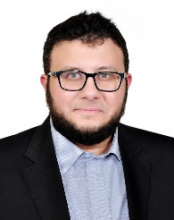
Ultraviolet (UV) communication overcomes pointing and tracking errors and is superior to other modern optical wireless communication technologies at short range. Using effective wavelengths from 200 to 280 nm, enables the non-line-of-sight (NLOS) outdoor UV communication in the presence of strong molecular and aerosol scattering. Because of these characteristics, solar blind NLOS UV communications offers broad coverage and high security. In this work, NLOS UV communication is considered with decode and forward (DF) relays in the presence of log-normal (LN) channels using the best relay selection techniques according to the channel state information (CSI). Then the outage probability of the multi-relay UV system is discussed for the proposed model. Simulation results verify the effectiveness of our employed analytical model. The outage probability for both serial and cooperative relays is compared with a different number of relays. Numerical simulations are further presented for many factors influencing the functioning of the system such as elevation angle, atmospheric scattering parameters and receiver field of view (FOV) angles. The obtained results demonstrate that increasing the number of UV NLOS cooperative relays does not necessarily improve the system performance, but there are other factors that must be considered such as the value of the elevation angle and the number of relays.
Dr. Mohamed Abaza received the B.Sc. and M.Sc. degrees in electronics and communications engineering from the Arab Academy for Science, Technology and Maritime Transport (AASTMT), Cairo, Egypt, in 2009 and 2012, respectively, and the Ph.D. degree in digital communications from the “Université de Bretagne Occidentale”, Brest, France, in 2015. From 2009 to 2012, he was a Teaching Assistant in AASTMT. He is currently an Assistant Professor with AASTMT, Giza, Egypt. He authored one book, eight international journals, and six international conferences. His current research interests include multiple-input multiple-output systems, relay-assisted cooperative communications, and optical wireless communications. He was Selected as an Outstanding Reviewer for the Optics Communications (Elsevier) in 2016. He serves as a Reviewer for the IEEE, SPIE, OSA, Elsevier, and Hindawi Communication Society's journals.




